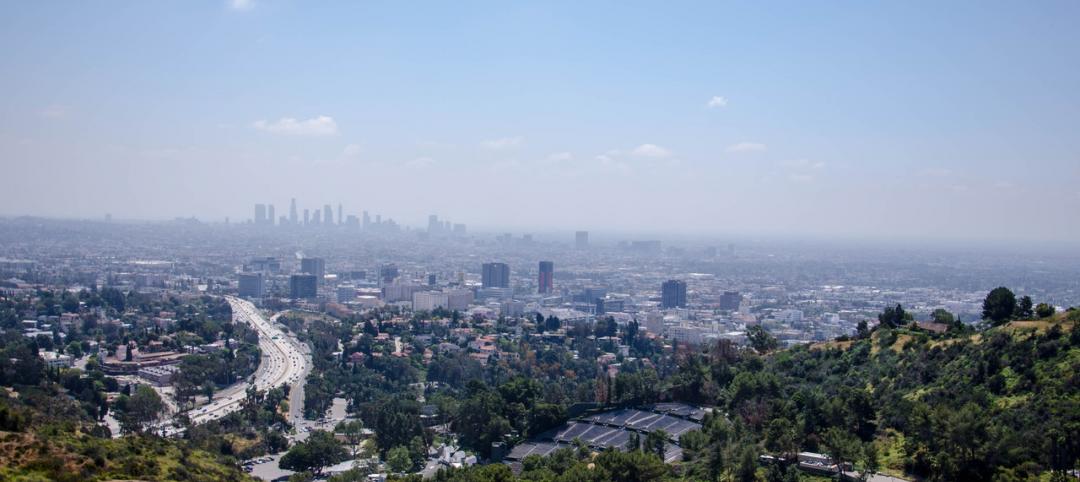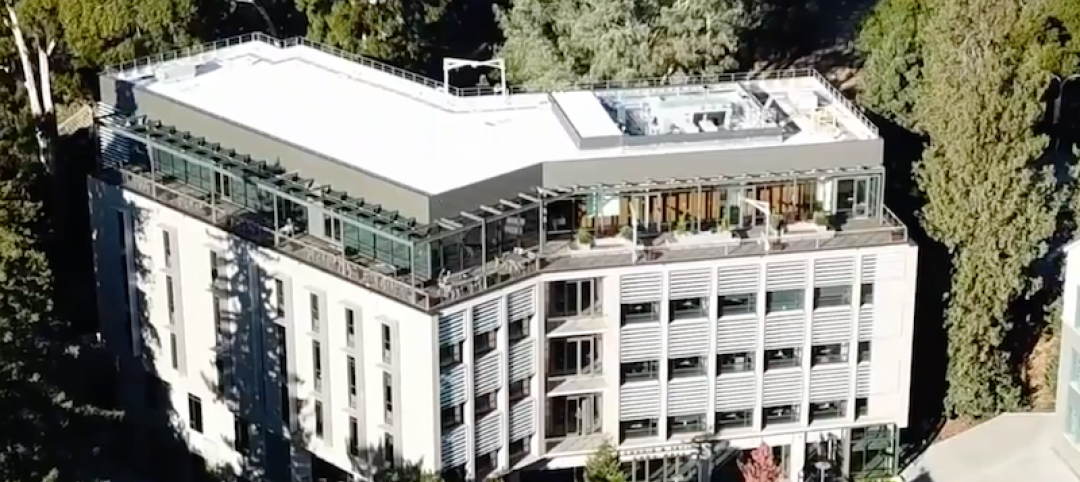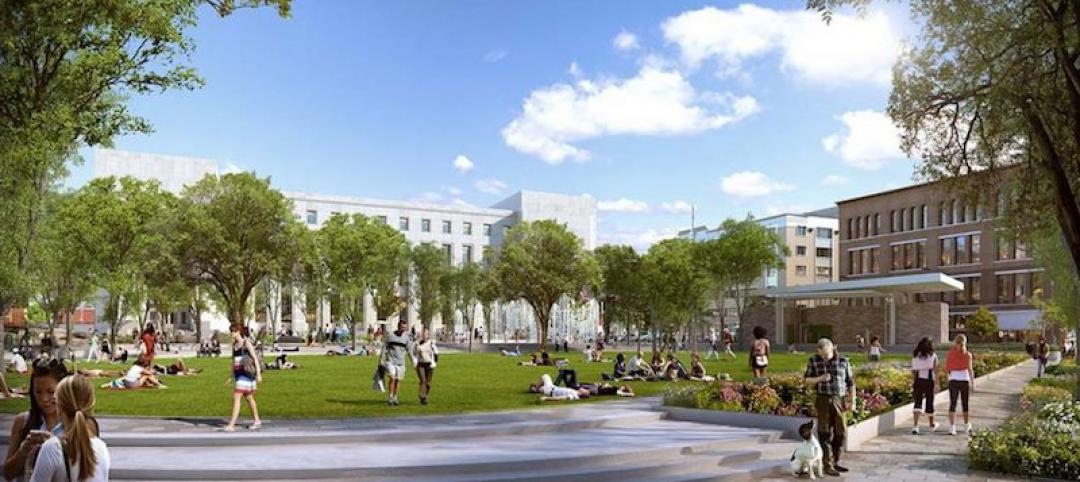With security and sustainability becoming critical factors in nonresidential construction, design sometimes takes a back seat on projects.
Case in point: New York City's second Public Safety Answering Center, known as PSAC II, which opened last June in the Bronx. The 450,000-sf facility, sitting on 8.75 acres along the Hutchinson River and Pelham Parkways, supplements PSAC I, located at the MetroTech Center in Brooklyn. The newer facility is set up to handle more than 11 million emergency 911 calls annually to the city’s police and fire departments.
As tall as a 24-story building, the cube-like PSAC II is a fortress protected by 15-inch-thick concrete walls, with a relatively limited number of windows for an edifice this size: 77 4x10-foot openings and 54 4x20-foot openings. There’s only one window on the west side of the facility, facing a train station. The main building’s overall window-to-wall ratio is 4%.
The windows and doors are blast- and tamper-proof. Computers, machinery, and mechanicals (often duplicated for security purposes) take up half the building’s floor space. Its 230 or so operators and dispatchers aren’t allowed to leave the building at any time during their work shifts, which sometimes last up to 14 hours.
“It was a challenge to take a vertical bunker and make it architecturally interesting, and a place where people working in a high-intensity environment could tolerate being inside of it,” recalls Gary Haney, FAIA, RIBA, Design Partner with Skidmore, Owings & Merrill. SOM, which also designed PSAC I, provided architectural services on the $800 million PSAC II. Jaros Baum & Bolles was the MEP Engineer, and Vidaris the sustainability consultant.
To make PSAC II something more than just a secure concrete box, SOM created what Haney describes as a “kind of camouflage” on the exterior with a sawtooth, two-color aluminum façade that has a “picket fence quality” and reflects sunlight.
 The plant wall is by CASE and Rensselaer Polytechnic Institute. Courtesy SOM/©Albert Vecerka|Esto.
The plant wall is by CASE and Rensselaer Polytechnic Institute. Courtesy SOM/©Albert Vecerka|Esto.
Working with landscape architect Thomas Balsley, FASLA, SOM further softened the building’s monolithic exterior by installing a wrap-around sculptural berm of wild grasses. Haney has described the berm as making the building appear to float. The berm also serves as security cover to help hide the facility, which has two floors underground and an attached entry pavilion. “When you view the berm from the inside, it creates an infinite landscape,” says Haney.
SOM laid out the building’s windows in an irregular pattern to give it design character. The firm paid particular attention to bringing natural light into the 50,000-sf, L-shaped call center, which has 30-foot-tall ceilings.
“We’ve gone back to the building almost every week since it opened, and what I’m most happy about is the amount of light that comes into the call center,” says Haney. “It’s a pleasant surprise.”
The same is true on the third floor, which is mostly office space. “From the inside, you hardly notice there aren’t a lot of windows,” he adds.
In order to fine-tune the mechanical systems, the project team took almost a year to commission the building. “That made a huge difference in controlling energy consumption,” says Haney. The effort helped PSAC II achieve LEED Gold certification.
The building earned LEED points for its use of a living wall in its lobby and cafeteria areas. The plant wall—developed by CASE, SOM’s design research laboratory, in partnership with Rensselaer Polytechnic Institute—acts as a natural air filter and a center of engagement for the building’s occupants.
“It became part of the idea of making the indoors more livable,” says Haney, who adds that the city was very receptive to including this design feature.
 Landscape architect Thomas Balsley Associates created the grass berm. Courtesy SOM/©Albert Vecerka|Esto.
Landscape architect Thomas Balsley Associates created the grass berm. Courtesy SOM/©Albert Vecerka|Esto.
Related Stories
Green | Apr 12, 2019
L.A. County’s first sustainability plan tackles carbon, air quality, transportation, resilience
The plan aims for net-zero carbon by 2050.
Sustainable Design and Construction | Apr 9, 2019
One of the largest zero-carbon, net-zero buildings is rising in Spokane
Catalyst will be part of an innovation hub, with Eastern Washington University as its main tenant.
Codes and Standards | Apr 8, 2019
LEED v4.1 now available for cities, communities, residential/homes
The rating system emphasizes performance monitoring, fully integrated design, social equity, and human health.
Green | Apr 8, 2019
New USGBC research explores green building industry’s role in highlighting the importance of buildings as a global solution
First wave of research is part of the Living Standard initiative, which seeks to raise the quality of life for people around the world through research and storytelling.
Green | Jan 28, 2019
This is the country’s greenest academic building
Perkins+Will designed the building.
Green | Nov 15, 2018
USGBC launches LEED Zero, to address net zero carbon operations and resources in LEED green building projects
LEED Zero complements LEED to verify the achievement of net zero goals and signals market leadership in green buildings.
Green | Oct 17, 2018
USGBC survey suggests employees are happier, healthier, and more productive in LEED green buildings
Can healthier, more sustainable buildings give employers a hiring edge to attract best in class talent?
Green | Oct 15, 2018
Green, and then some: Architecture firms are helping cities raise the stakes in green design
Architecture firms are answering the call of local governments and institutional clients for higher standards in green building design.
Green | Sep 11, 2018
Chicago becomes seventh city in the world to achieve LEED for Cities Platinum certification
It is the highest level of certification available from the U.S. Green Building Council.
Green | Aug 28, 2018
Chattanooga’s Miller Park set to open after $10.3 million overhaul
Spackman Mossop Michaels and Eskew Dumez Ripple partnered on the project.

















